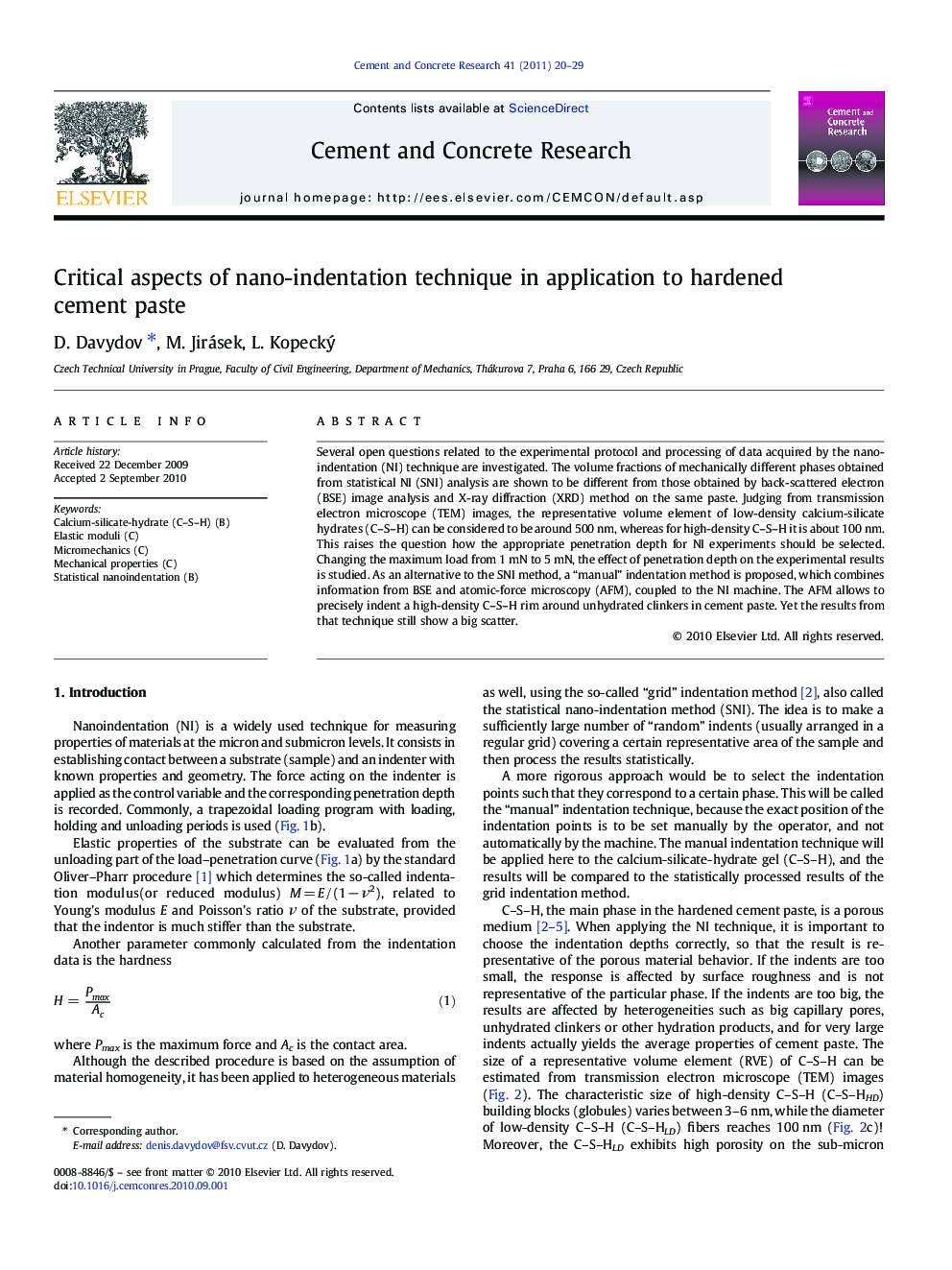| Article ID | Journal | Published Year | Pages | File Type |
|---|---|---|---|---|
| 1457079 | Cement and Concrete Research | 2011 | 10 Pages |
Several open questions related to the experimental protocol and processing of data acquired by the nano-indentation (NI) technique are investigated. The volume fractions of mechanically different phases obtained from statistical NI (SNI) analysis are shown to be different from those obtained by back-scattered electron (BSE) image analysis and X-ray diffraction (XRD) method on the same paste. Judging from transmission electron microscope (TEM) images, the representative volume element of low-density calcium-silicate hydrates (C–S–H) can be considered to be around 500 nm, whereas for high-density C–S–H it is about 100 nm. This raises the question how the appropriate penetration depth for NI experiments should be selected. Changing the maximum load from 1 mN to 5 mN, the effect of penetration depth on the experimental results is studied. As an alternative to the SNI method, a “manual” indentation method is proposed, which combines information from BSE and atomic-force microscopy (AFM), coupled to the NI machine. The AFM allows to precisely indent a high-density C–S–H rim around unhydrated clinkers in cement paste. Yet the results from that technique still show a big scatter.
